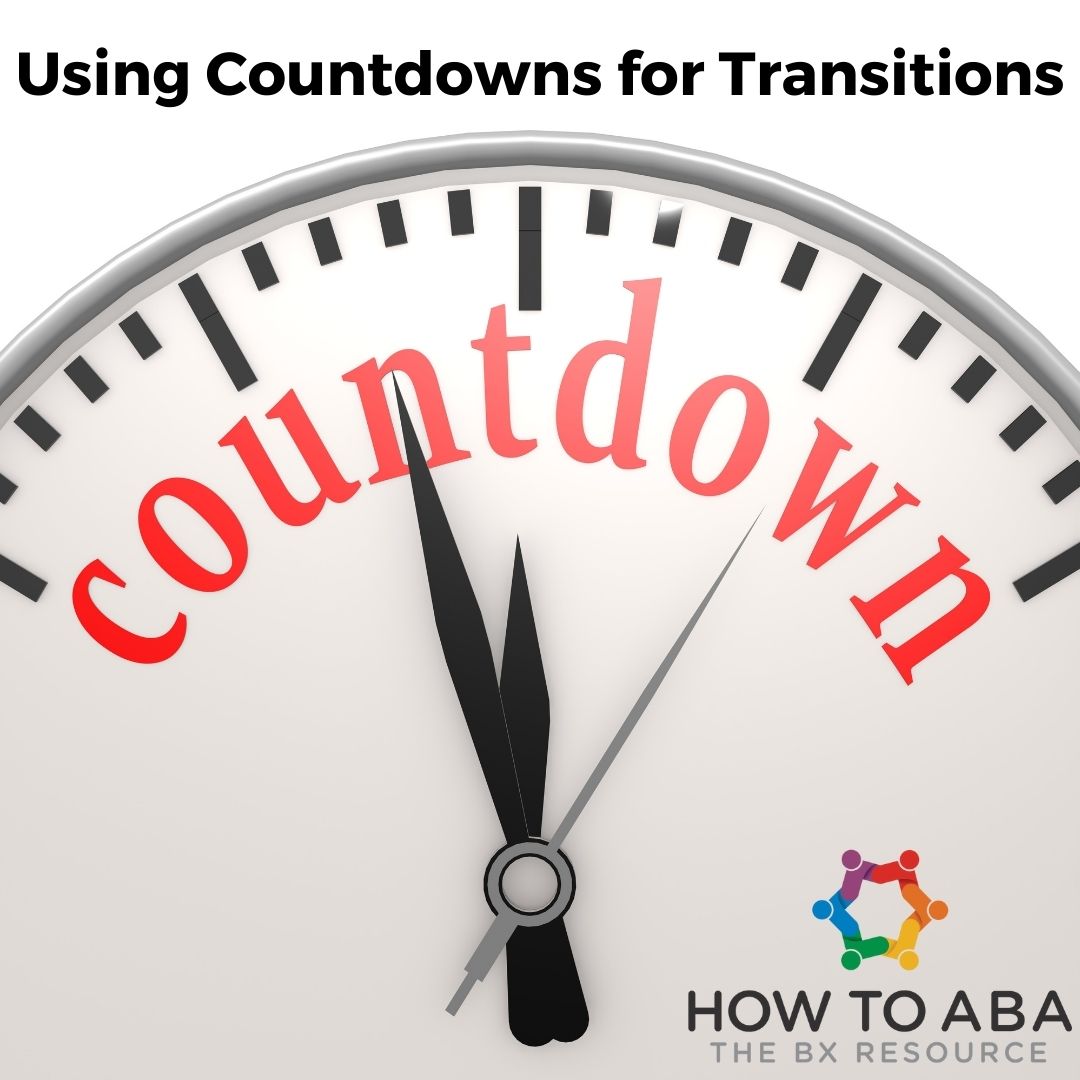
I enjoy the evening hours because there are less demands on my time and attention. They are quiet, and I can finally spend time engaging in preferred activities. Being the opposite of a morning person, it is easy for me to lose track of time and stay up past the point of being a functioning human the next day. As we all know from Newton, an object in motion will stay in motion (and an object at rest will stay at rest), until another force acts on it. If I did not have the help of someone keeping me accountable for finishing up tasks and activities, I would stay ‘in motion’ past my bedtime. What has always been helpful for me are the reminders that it is getting late, so I know to end my activity instead of starting a project and having to leave it uncompleted.
Transitions
Transitions can be difficult for our learners because they seem sudden, and can mean leaving a more preferred activity for a less preferred activity. What can we do to help make transitions easier for our learners? We can use antecedent strategies and teach replacement behaviours.
Antecedent Strategies
An antecedent strategy is something we can put in place before the transition. Examples include visual schedules that are reviewed, priming, first-then boards, the use of timers, transition toys, or other.
When implementing a timer or countdown for transitions, keep these strategies in mind:
- Give a verbal indication that the transition will happen in the near future (use visuals depending on your learners’ needs)
- Revisit the schedule that shows what will come next (again, use visuals depending on your learners’ needs)
- Provide frequent updates on how long until the transition is to take place (the concept of time and when can be a challenge for some learners)
Example: “5 more minutes” [1 minute passes] “4 more minutes”, etc. - Provide behaviour-specific praise when the learner transitions appropriately (e.g., cleans up toys, puts on shoes, throws out garbage, etc.)
- Provide reinforcement for successful transitions
- Follow through with the instruction
Replacement Behaviors
Not every transition will be a smooth one. Teaching the learner replacement strategies will help. Remember: all behaviour is communication, so when a learner cries or elopes, what are they trying to tell you?
Some replacement behaviours can include teaching functional communication, such as teaching the learner how to request for more time such as “can I have 1 more minute?”, appropriately protesting “I don’t want to go outside” or asking for accommodations like “can I bring my toy?”
What To Avoid
It is important to follow the steps listed above when using antecedent strategies like a countdown for transitions. What is seen often, and what we want to avoid is the use of threatening language, taking things away from learners, and bribery.
Example:
Adult: “I said it is time to go” [learner does not leave] “don’t make me count to 5” [learner still does not leave]
Adult: “one, two, three, FOUR, FIVE”
The example above actually teaches the learner that they do not have to follow the instruction, and at the same time they are not learning any appropriate communication or replacement strategies.
Example:
Adult: “It is time to go” [learner does not leave] “if you come here now, you can watch a video on my phone”
In the second example, the learner learns that if they do not listen to the instruction, they will get better things afterwards. The longer the learner does not listen, the more they will be offered as a bribe.
If you are using videos as a transition activity, they should be part of the transition routine, stated up front, and available for appropriate and successful transition following the instruction. NOT offered after the learner did not listen in a hopes to bribe them to do what was asked.
Watch our YouTube video on the effective use of a countdown for transitions.

